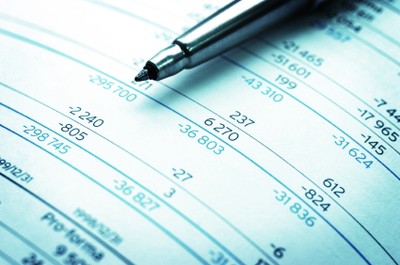Balance Sheet Analysis
Balance sheet analysis reflects the financial health of the company through research of its assets, liabilities and equity.
Many investors don't pay that much attention to balance sheet analysis as they do to income statement analysis. However, if you would like to get the whole picture of the company business, you will have to research company assets and liabilities as well. Balance sheet analysis reflects the financial health of the company, which is even more important in turbulent times like we are facing since the last financial crisis.
Basis of Balance Sheet Analysis
If we put it very simply, the balance sheet tells investors how much company owns (assets), how much it owes (liabilities) and what is the height of its equity (shareholders equity or net assets), which is calculated as the difference between former two figures.
Balance sheet analysis reveals important fundamental figures like how much debt the company has, how high are outstanding claims to its customers, how much liquid assets like cash and cash equivalents it owns in a specific time and it finally tells investor how much profit has the company generated over time.
Assets, liabilities and Equity
Balance sheet analysis consists of analyzing three main figures: assets, liabilities and equity.
Assets
Assets can be divided in two main groups: current assets and long-term assets. The difference between these two groups of assets is in the time in which they will likely convert in cash; current assets are usually converted in cash within 12 months, while long-term assets are converted in cash over a longer period of time.
Current assets consist of cash, inventories and accounts receivables. Cash is something you should desire in the balance sheet you tend to invest in. A lot of cash in balance sheet reflects company's strong performance in the past. Cash reserves should be growing, thus providing the company solid ground for tough times on one hand and more options for financing future growth on the other hand. Of course, a lot of cash cannot stay in this form permanently. Management of the company has to find new and new investment opportunities to meet the requirements of the shareholders regarding their return on equity.
Services industries normally don't deal with inventories, while product oriented companies have in every moment some finished products that were not sold yet. It is the best for the company to have as low inventories as possible to normally distribute their products to the customers via sales channels. It makes sense to pay attention to so called inventory turnover, which is calculated as costs of goods sold (COGS) and divided by average inventories in the same period of time and it signals investors the time it takes for the company to move the product out of the production line, through warehouse to its customers. The shorter this time is the better for the company. You should also compare the growth of inventories compared to the sales. If inventories are growing at faster peace then sales, it is not a good sign for investors.
The last among current assets to be analyzed while performing balance sheet analysis are receivables or best known as uncollected bills. Receivables are signaling the financial efficiency of the company, since it tells you how fast it collects what it's owed. The faster, the better or if I put it other way, the longer it takes for customers to pay company's bills, the worse for the company, because they have to credit customers for longer time instead of financing other segments of their business like R&D, equipment and growth opportunities for example. The happiest are those companies, which have products or services which are paid right away or in advance. All other companies sometimes consciously extend their payment date in order to get the customer order, while it can also happen to them that the customers fail to pay, especially in downturns and cash crunches.
Long-term or non-current assets include fixed assets, like property, plant and equipment for example. This part of balance sheet analysis is less important for investors and that is why we will not go in more detail at this time.
Liabilities
Similar to assets, liabilities can be divided in current and long-term liabilities as well. Current liabilities must be paid within one year and you can see mostly obligations to suppliers here. Long-term liabilities are usually paid in more than a year time and you can find mostly bank debt or issued bond debt here.
Investors should look for companies where with high assets/liabilities ratio and where the level of debt is falling. If the company has a lot of debt and it is still growing, this is a warning sign to examine the company in more details. It can happen that cash flow isn't sufficient to cover debt liabilities and the company can go bankrupt in this case.
You should calculate quick ration by subtracting inventories from current assets and then dividing this number by current liabilities. What you get is a figure telling you, if the company is able to cover its short-term liabilities with its liquid assets.
Equity
Equity is representing the ownership of shareholders is calculated as the difference between company's assets and its liabilities. Equity consists out of many separate figures among which paid-in capital and retained earnings are the most important ones. Paid-in capital is what owners have paid for the shares when the stock was first offered to the public, while retained earnings represent the sum of money which was not paid to its shareholders yet, but were rather retained for future investment projects or reserves. What investors should look for is how retained earnings are invested and what kind of return do they generate.
Other Important Factors to Watch When Performing Balance Sheet Analysis
What you will not find in balance sheet are intangible assets, like patents, trademarks, copyrights, goodwill, brand recognition and other intellectual property of the company. These are all valuable assets of the company, but since they are hard or impossible to measure their worth, they are not published in the balance sheet.
Another factor to watch is the off-balance sheet, where large financing expenditures are often kept and companies use it to keep their debt levels low.
Recommended Reading - Recommended Reading - Recommended Reading - Recommended Reading
Back To Fundamental Stock Analysis Index...
Next step: Cash flow statement analysis...
Written by: Goran Dolenc
Do you find this content useful? Like! Tweet! Recommend! Share!
Back from Balance Sheet Analysis to Investing in Stock Market
Back from Balance Sheet Analysis to Best Online Trading Site for Beginners home page
Building an investment portfolio from scratch or optimizing existing one can be quite a challenging job.
Our 'PORTFOLIO BUILDER' is a type of money management software that was designed to help you optimize you investment portfolio, according to your unique saving goals, yields expectations, risk tolerance and time horizon.
Important! We only accept limited FREE trials per month. You had better run the portfolio optimizer now. It can save you a lot of money.











